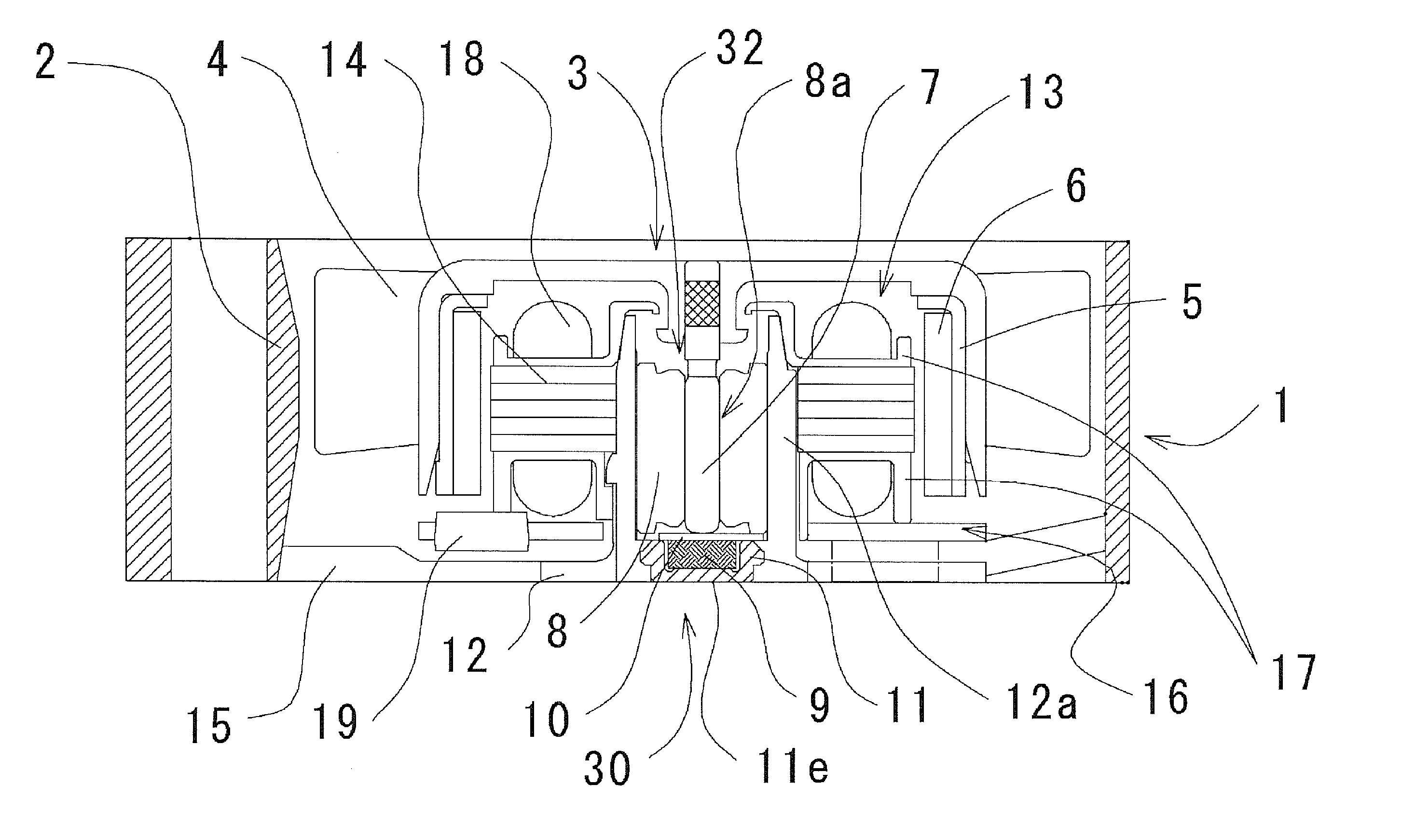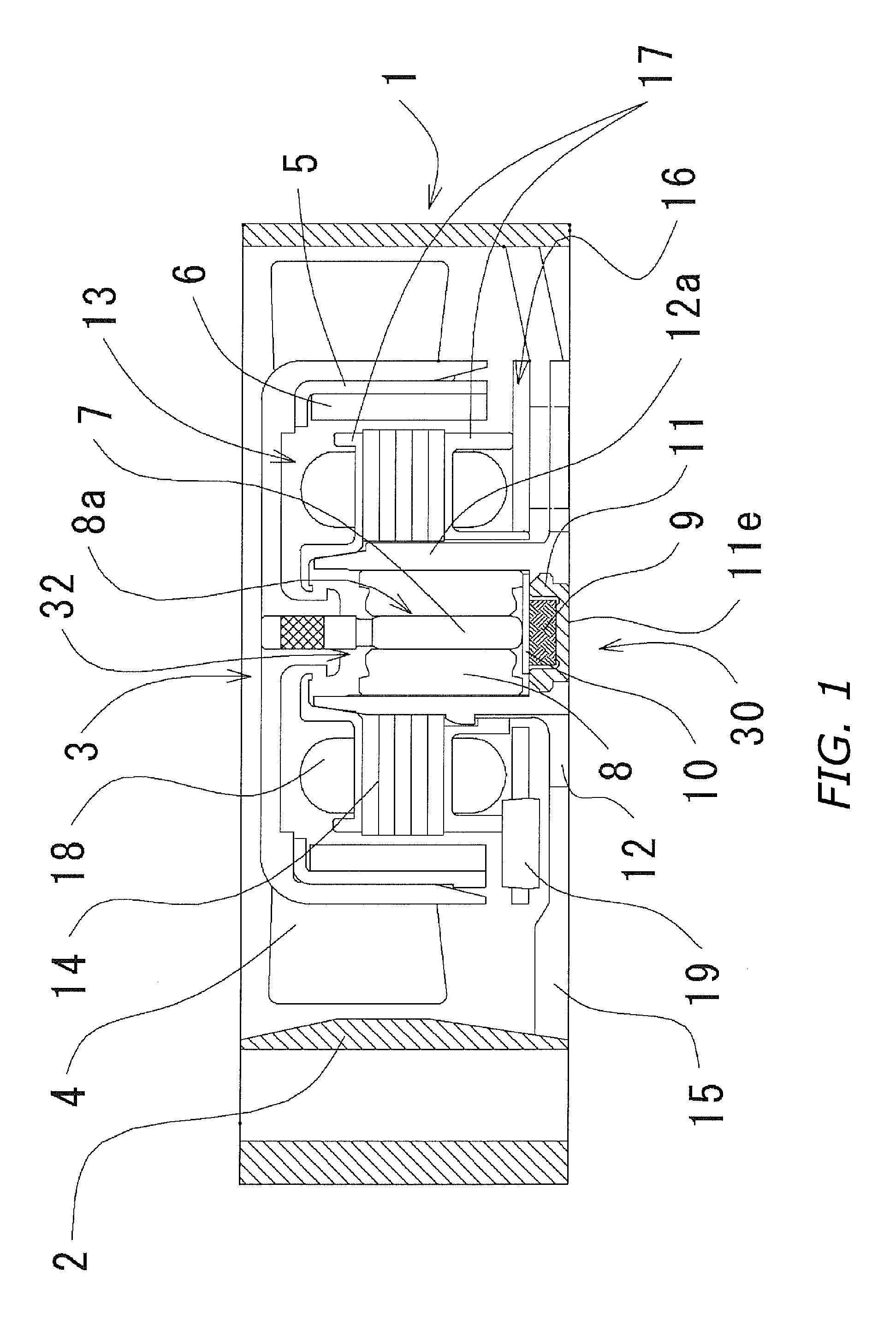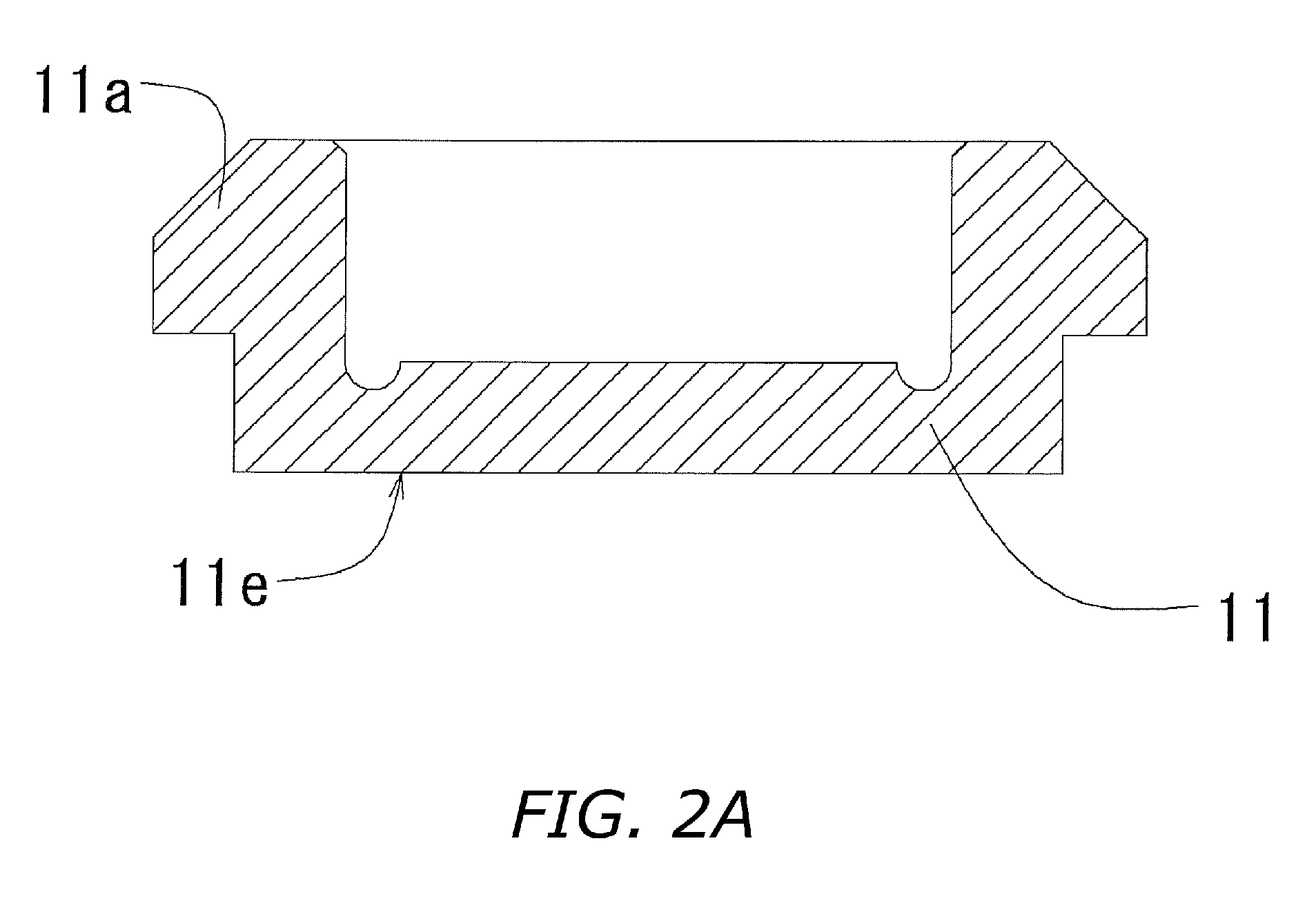Motor
- Summary
- Abstract
- Description
- Claims
- Application Information
AI Technical Summary
Benefits of technology
Problems solved by technology
Method used
Image
Examples
first embodiment
[0021]FIG. 1 is a diagram illustrating a cross section of an embodiment of a motor of the present invention. Hereinafter, the motor used for a fan will be described.
[0022] A fan 1 has a structure in which a rotor section 3, which drives rotationally once an external electric current is applied thereto, has attached thereto an impeller 4 having a plurality of blades. The rotor section 3 includes a shaft 7. The shaft 7 and the impeller 4 are integrally provided such that one end of the shaft 7 is affixed to a center section of the impeller 4. The impeller 4 is formed by a resin injection mold. The one end of the shaft 7 is inserted in a die forming the impeller 4, and the one end will be covered by resin forming the impeller 4 thereby affixing the shaft 7 to the impeller 4.
[0023] Further, the fan 1 includes therein a bearing unit 30. The bearing unit 30 includes therein the shaft 7, a bearing retaining section, a sleeve 8, and an attracting magnet which will be described later.
[002...
PUM
 Login to View More
Login to View More Abstract
Description
Claims
Application Information
 Login to View More
Login to View More - R&D
- Intellectual Property
- Life Sciences
- Materials
- Tech Scout
- Unparalleled Data Quality
- Higher Quality Content
- 60% Fewer Hallucinations
Browse by: Latest US Patents, China's latest patents, Technical Efficacy Thesaurus, Application Domain, Technology Topic, Popular Technical Reports.
© 2025 PatSnap. All rights reserved.Legal|Privacy policy|Modern Slavery Act Transparency Statement|Sitemap|About US| Contact US: help@patsnap.com



